Today, Lenovo launched three new workstations. One is the Lenovo ThinkStation PX, a dual-socket 4th Gen Intel Xeon Scalable “Sapphire Rapids” Xeon workstation. The other two are based on the newly announced Xeon W series and are the Lenovo ThinkStation P7 and ThinkStation P5.
Lenovo ThinkStation PX
This is the return of the dual-socket Intel Xeon workstation. The AMD Ryzen Threadripper Pro that we reviewed in the Threadripper Pro 3000 and 5000 series had capabilities so close to dual socket Xeons of their era that they put a lot of pressure on this market. Now, with the Sapphire Rapids generation of Xeon CPUs, we are seeing more workstation platforms get a refresh.
The ThinkStation PX line can accept the full TDP range of the new Xeon CPUs, meaning one can put up to 60 core CPUs in each socket for 120 cores total. The system also supports up to four NVIDIA RTX 6000 Ada generation GPUs. Our review of the NVIDIA RTX 6000 Ada generation will be coming soon. Many may have seen our GPU series picking back up.
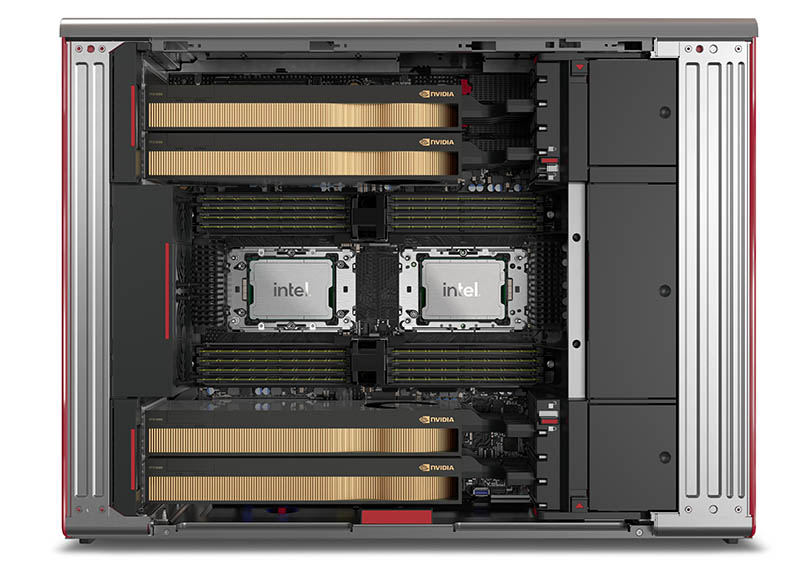
Something that is really interesting here is that Lenovo has custom 1.85kW power supplies for this workstation that are massive in size compared to what we see on the server side, likely to help with noise. The ThinkStation PX in the high-end quad RTX 6000 Ada configuration has a major flaw: it is stuck with only 1x 1GbE and 1x 10GbE for networking. This is in an era where we have 400GbE NICs now working on servers with similar configurations.
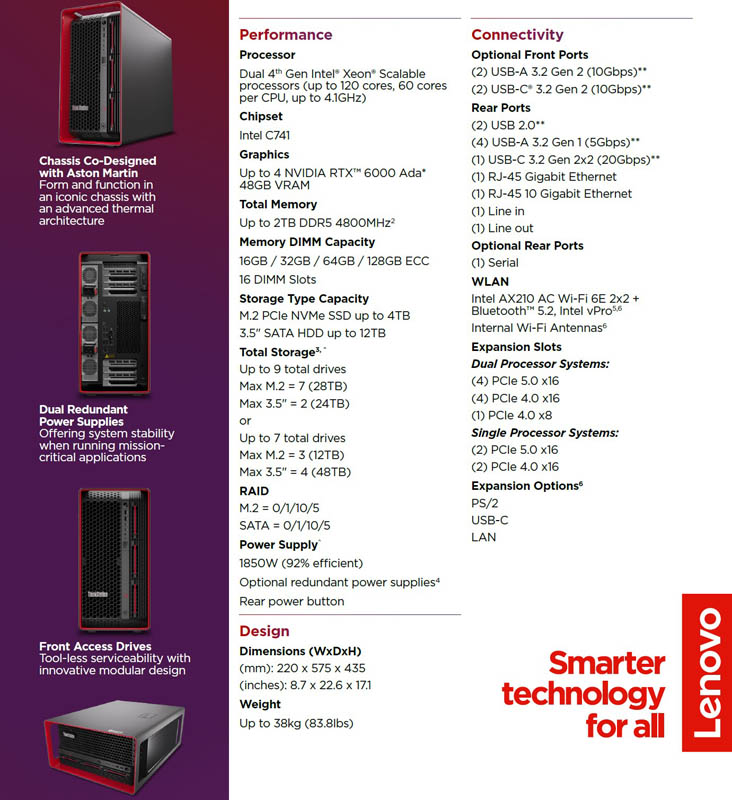
One of the primary design points of the PX is also that it can be rack mounted. Many studios, design shops, and other professional users put these high-end systems in a data center where they can be better cooled and maintenance, storage, and backups are easier to manage. It also helps with licensing some applications to use a remote desktop model. Still, this is the second dual-socket Sapphire Rapids generation Xeon tower we have seen with WiFi options (the other being Supermicro’s massive liquid-cooled one we introduced at the Xeon launch.)
Lenovo ThinkStation P7
The Lenovo ThinkStation P7 is the company’s Intel Xeon W-3400 series platform designed for up to 56 cores.
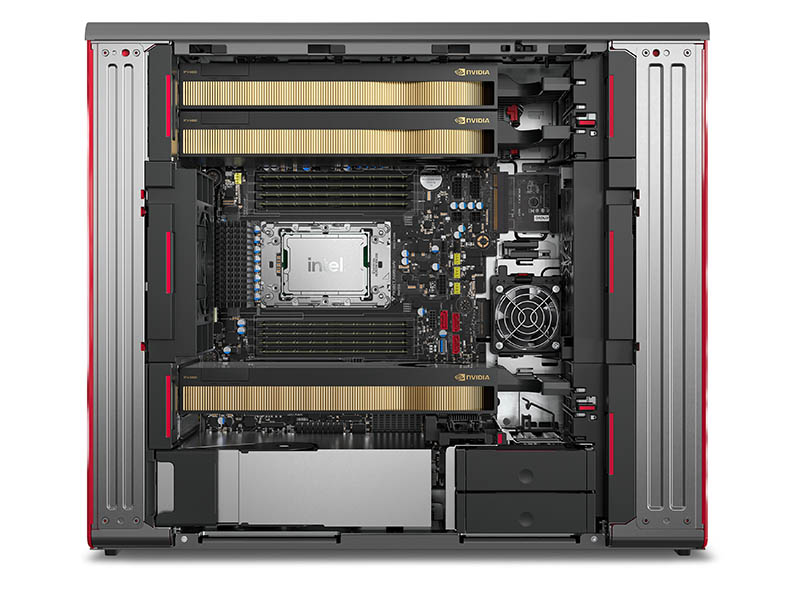
This will be Lenovo’s main competitor for the space that the ThinkStation P620 occupies on the AMD side.
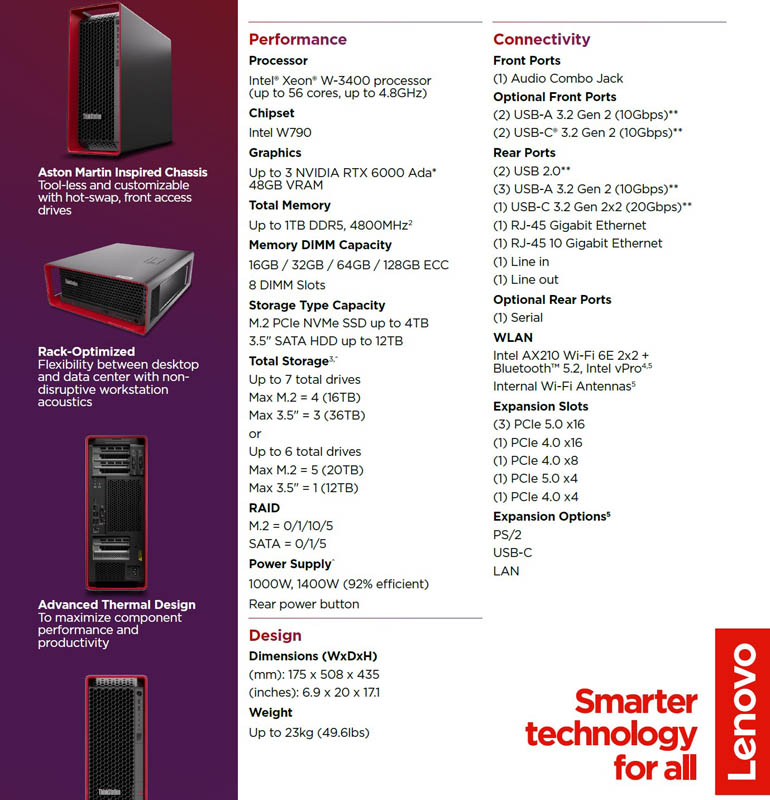
Overall, this looks like a great platform.
Lenovo ThinkStation P5
The Lenovo ThinkStation P5 is the company’s Intel Xeon W-2400 series which might be the most interesting.
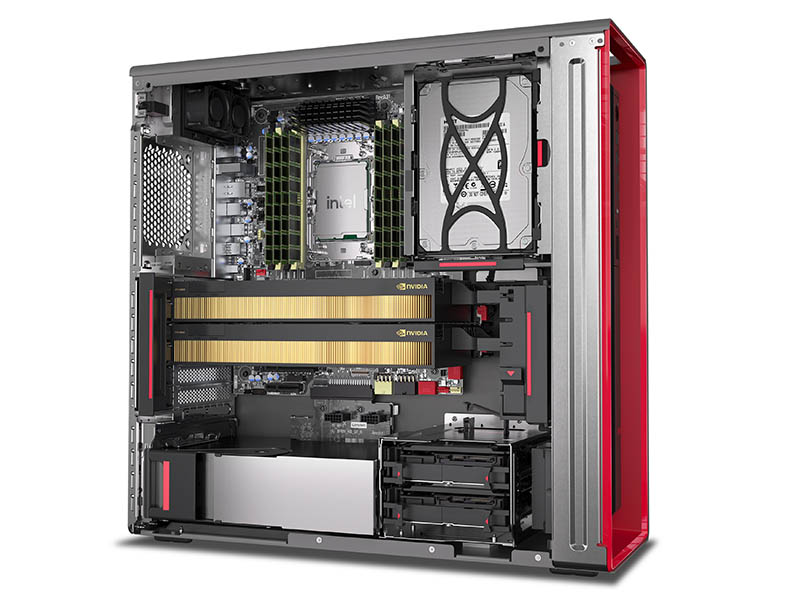
Yesterday we published a review of an AMD Ryzen server from ASRock Rack. One of the biggest comments was a desire to add more PCIe lanes, not necessarily more than 8-16 cores. Also, we heard calls for more memory. For many, the Xeon W-2400 series is going to be the platform that satisfies that need. Here we get 2x PCIe Gen5 x16 slots and several PCIe Gen4 slots in a lower power and cost platform.
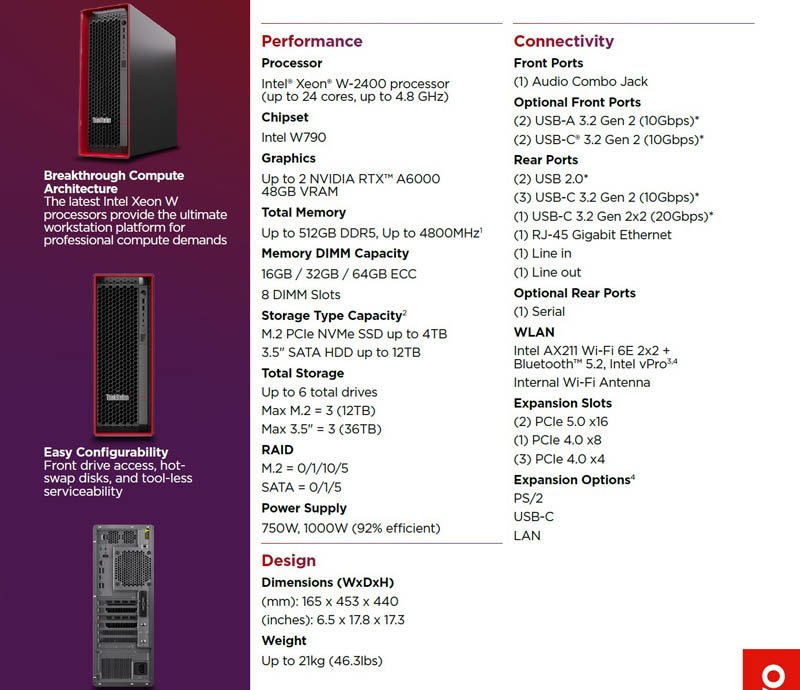
The ThinkStaiton P5 also gets the updated styling of the PX and P7.
Final Words
Overall, these are interesting workstations. At STH, we are going to have a new Xeon W build, and also a pre-AMD Storm Peak builds in the next 2 months or so, along with the NVIDIA RTX 6000 Ada review. One question we have been asking is whether 10GbE is fast enough for these systems. Many studios see that as the top-end solution they have to desks, but with these new higher-power workstations, perhaps that needs to increase. Feedback is welcome on that one.
If you want to learn more about the new Sapphire Rapids generation, here is a video:

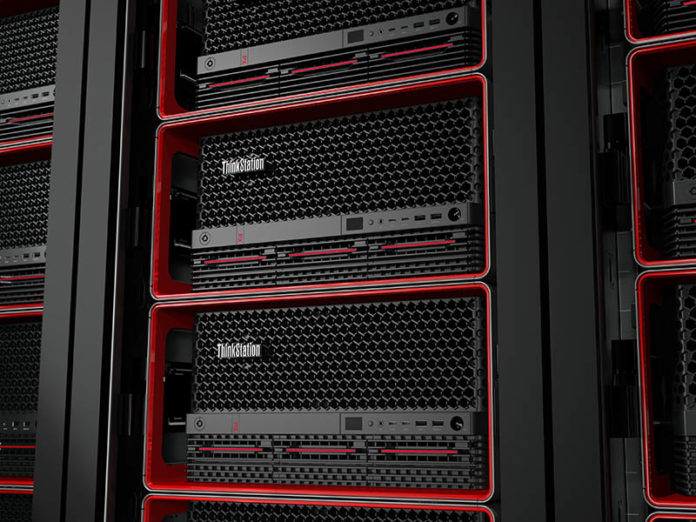
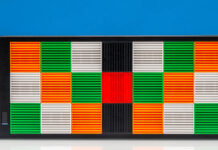

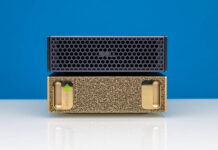
Nice design, but when will be get Xeon-W (2400/3400) reviews?
Dual PSUs is pretty goofy for a workstation. Even in datacenters applications, dual PSU is considered by many to be one of those legacy things that doesn’t really pay off. It looks like HP did a better overall design with the Z8 G5.
Oh, seems like reviews are coming in 2 months.
At first I misunderstood what you meant with the “new Xeon W build” in two months. These thinkstations are also scheduled for May.
Dual power supplies seem reasonable to me: After a person gets tired of having one under their desk, it can be rack mounted in the local data center where the heat and noise won’t bother anyone. I’m still happy with an older Supermicro 7048GT-TR GPU workstation exactly because it’s no longer in the office.
It would be nice if they came in colors other than red.
It looks like you have a typo in the “Lenovo ThinkStation P7” section: you introduce it as the P5.
It’s true that dual PSUs are hardly ever needed from a PSU failure point of view, but as a means of surviving UPS failure and convenience in not needing to power down servers when changing cabling/or swapping out a ups etc they are pretty invaluable.
@Tim W it just seems like the kind of thing nobody could possibly care about. If you are going to rack workstations in a datacenter, you are also going to store userdata off-box and be able to move the user’s assignment to some other box more or less instantly, removing the need to care if a single box is on or off.
I did not invent this of course, it’s well known as “cattle not pets”. And I haven’t worked anywhere in the past 15 years where they thought UPS, PDUs, or dual PSUs were a good idea. Every large scale operator in my experience knows that the weird and novel failures caused by these components are worse and more common than the ones they help avoid.
I saw one of the new boxes at a Lunch sponsored by Lenovo on our University campus. We are a Lenovo partner and have a Lenovo Certified repair center on campus. Neat boxes.
What I didn’t see mentioned in this article, is that Lenovo got Austin Martin to help design these new boxes. Yes, that Austin Martin, the car company. Per the Lenovo reps today.
Dreamworks is using Lenovo systems to render their animation for stuff like the Puss N Boots series.
Jeffrey Baker your take on Dual PSUs is wrong. In the facility I work they insist on everything being dual corded, and if a workstation doesn’t have dual PSUs, that means running through an ATS that takes up even more rack space.
The main reason for the insistence of dual powered devices is so that maintenance/upgrades can be done on the power system one side at a time without requiring everything to be shut down (some things which simply cannot be shut down). I won’t argue with you that in some cases (storage I’m looking at you) there are aspects of redundancy that cause more problems than they solve and give a false sense of security…but dual PSUs have no downsides I can easily think of aside from adding a relatively small amount of extra cost.
Also I’m not sure exactly what you’re seeing with the HP Z8 but it’s essentially the same design it has been for the last few years. We use almost exclusively HP Z8 at our facility and I am always wishing we had considered Lenovo (or even Dell). The Z8 hasn’t been bad per-se but we’ve had two of them with premature motherboard failures and of larger issue, their supply chain has been garbage the last few years. Every time we have placed an order it seems like a minimum 6 month lead time for a CTO model.